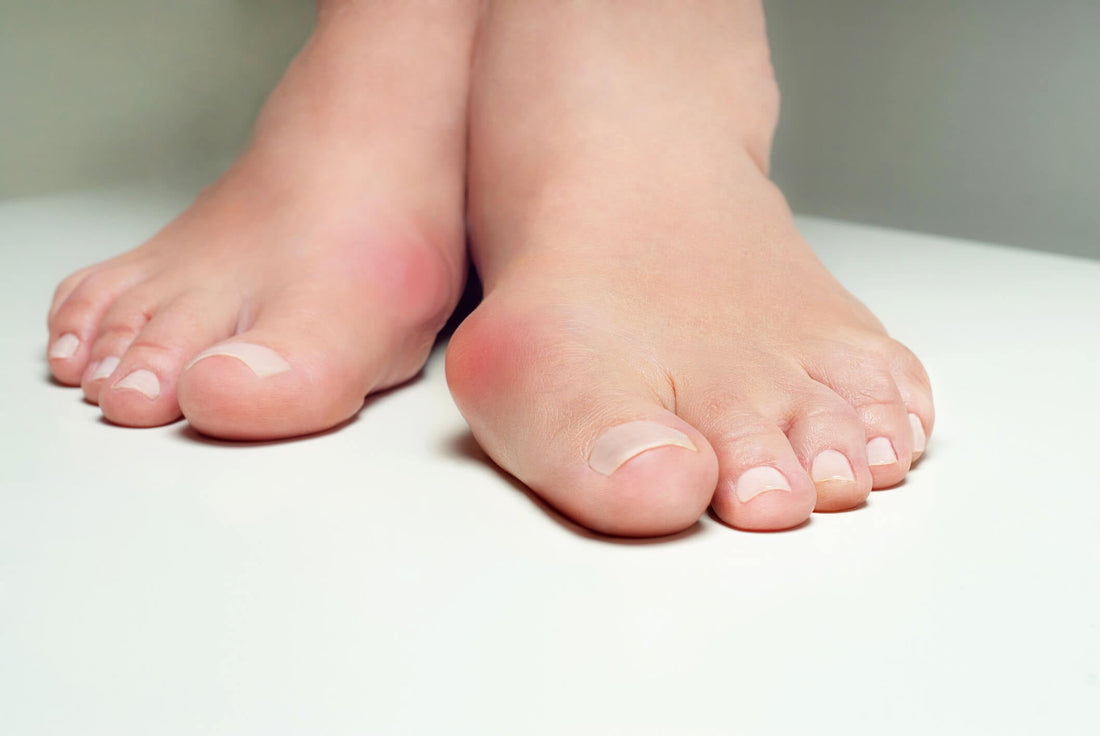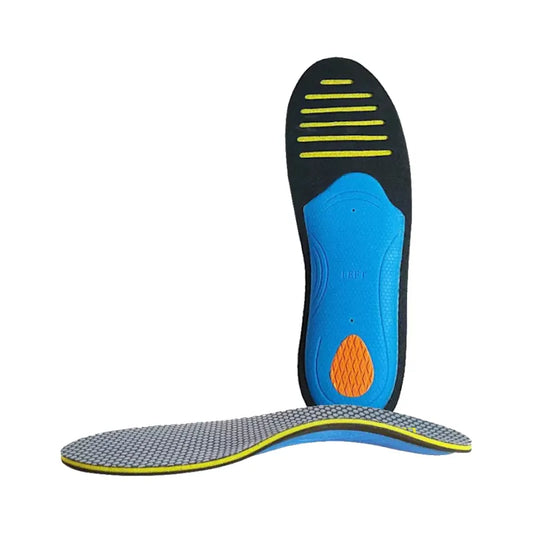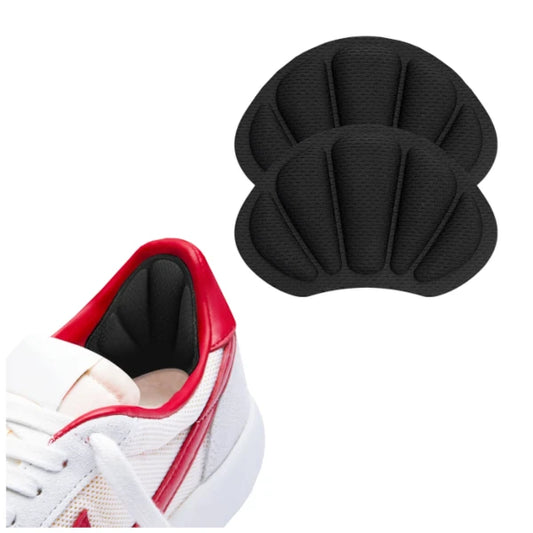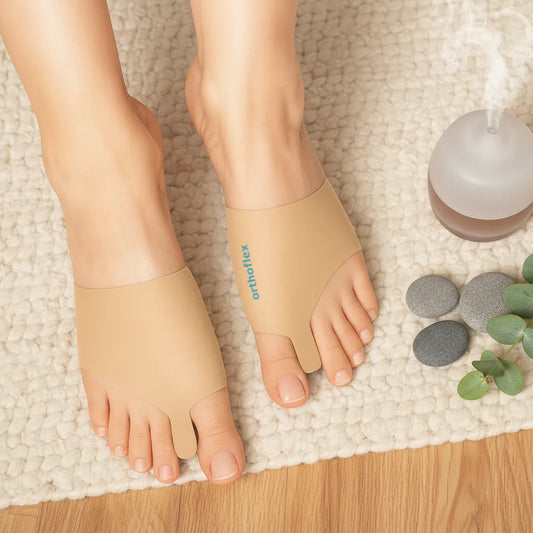
How to prevent bunions: 5 simple tips
Share
What is a bunion?
Bunions, also known as hallux valgus, are a condition characterized by the formation of an abnormal bony bump on the side of the foot, specifically at the base of the big toe. It is a progressive disorder that develops gradually over time.
The primary cause of bunions is the pressure exerted on the joint at the base of the big toe, leading to the toe shifting out of its normal position and leaning inward toward the second toe.
While bunions can affect one or both feet, they typically develop in adulthood. However, there are rare cases where children may be born with bunions or develop them later in childhood.

Hallux valgus places a significant burden on public healthcare due to its debilitating consequences among the general population. The demand for foot surgery is high, and the condition is often associated with foot pain, which can limit mobility and physical activity for those affected. This impact is particularly devastating for athletes, as prolonged periods of training can contribute to the development of bunions and hinder their performance.
Symptoms
Typically, bunions tend to manifest symptoms in the later stages of development, although some individuals may never experience any symptoms. Due to the substantial weight-bearing nature of the joint involved in activities such as standing and walking, bunions can give rise to foot pain, stiffness, redness, and swelling. If left untreated, bunions progressively worsen over time, potentially leading to difficulties in walking and experiencing discomfort while wearing regular footwear.
Additionally, bunions have the potential to cause nerve damage in the big toe, resulting in numbness. The skin on the sole of the foot often thickens and hardens, leading to the formation of calluses. Movement of the big toe also becomes more challenging. In some cases, other foot conditions may arise, such as hammer toes, ingrown toenails, limited range of motion in the toe, or the development of claw toes.
What are the risk factors and causes associated to bunions?
Several factors contribute to the development of hallux valgus, including:
- Individual body structure, particularly the foot: Factors such as foot pronation (the inward rolling of the foot) or having flat feet can increase the risk of developing bunions.
- Hypermobility of the first ray: When the first metatarsal bone, which connects to the big toe, is excessively mobile, it can contribute to the formation of bunions.
- Increased loads and strains on lower limb joints: Certain activities or conditions that expose the lower limb joints to higher loads and strains, such as excessive weight-bearing or repetitive stress, can contribute to the development of bunions.
- Weak connective tissue: Weakened or lax connective tissue can contribute to the misalignment of the toe joint and the formation of bunions.
- Shortened Achilles tendon and calf muscles: Tightness or shortening of the Achilles tendon and calf muscles can affect the biomechanics of the foot and potentially contribute to the development of bunions.
Although wearing shoes that crowd the toes is not a direct cause of bunions, it can exacerbate the progression of the deformity. This means that symptoms may manifest sooner, which helps explain why women are more commonly affected by bunions.
In some cases, the presence of other joint problems such as osteoarthritis or rheumatoid arthritis can contribute to the development or worsening of bunions.
How to prevent bunions
Here are some effective measures to help prevent bunions:
- Choose comfortable shoes with a spacious toe box: Opt for footwear that provides ample room for the front of your foot. This reduces pressure on the toes and the ball of the foot, minimizing the risk of abnormal toe positioning.
- Strengthen your foot muscles: Engaging in exercises to strengthen the muscles in your feet can promote their natural alignment, alleviate fallen arches, and reduce foot and ankle pain.
- Consider orthotics for additional support: If strengthening exercises alone are not sufficient, using orthotic devices like insoles, pads, or arch supports can provide the necessary support to keep your feet stable. They also assist in absorbing impact and evenly distributing weight.
- Allow your feet to rest: Since we spend a significant amount of time standing, it's important to give our feet regular periods of rest and relaxation. This helps release tension and alleviate pressure.
- Monitor and care for your feet: Bunions develop gradually, so paying attention to any changes in your feet, such as redness, pain, swelling, or the presence of a small lump, can help you identify subtle signs at an earlier stage.
- Maintain a healthy weight: If you are overweight, the excess weight puts additional pressure on your feet and big toe joint. This increases the likelihood of developing a bunion or experiencing inflammation and discomfort in the area.
By implementing these preventive measures, you can reduce the risk of developing bunions and promote the overall health and well-being of your feet.
Treatment
If you already have a bunion or are experiencing persistent pain and inflammation, it is advisable to consult a doctor for their professional opinion and guidance.
For the treatment of bunions, the following conservative approaches may be recommended by the doctor:
- Padding, taping, or orthotics
- Anti-inflammatory drugs and cortisone injections
- Physical therapy
If conservative treatments prove ineffective or the bunion continues to worsen, surgical options may be considered. Surgery aims to remove the bony enlargement, restore the normal alignment of the toe joint, and alleviate pain.
Conclusion
Bunions are a common forefoot condition, more prevalent among females and increasing with age. By taking proactive measures and seeking professional advice, you can effectively reduce the risk of developing bunions and maintain optimal foot health.
Although, if you already noticed changes in your toe, have symptoms and/or have been diagnosed with a bunion, non-operative management have proven effective in reducing pain and providing symptomatic relief. However, bunions tend to progress over time.
To prevent worsening or the development of bunions, a good pair of shoes is essential. Choosing the right footwear can keep your feet active and protect them from painful conditions, including bunions. Additionally, rest, exercise, and paying attention to your feet contribute significantly to maintaining foot health.
If you notice changes or experience pain around your big toe joint, it is recommended to consult a podiatrist for an official diagnosis and personalized treatment plan. Following the guidance of a healthcare professional who can assess your specific condition is crucial in determining the most suitable treatment approach for your bunion.
Author Bio

Inês Pinheiro
Certified Physiotherapist for Shoulder and Knee Injuries
Inês is a skilled physical therapist with a special interest and extensive experience in working with athletes, specifically football players and also neurologic patients.
References
- Kwan M-Y, Yick K-L, Yip J, et al. Hallux valgus orthosis characteristics and effectiveness: a systematic review with meta-analysis. BMJ Open 2021;11:e047273. doi:10.1136/ bmjopen-2020-047273
- InformedHealth.org [Internet]. Cologne, Germany: Institute for Quality and Efficiency in Health Care (IQWiG); 2006. Bunions: Overview. Available from: https://www.ncbi.nlm.nih.gov/books/NBK513134/
- Bunion. NHS choices. Available at: https://www.tims.nhs.uk/.
- Bunions (2020) RACGP. Available at: https://www.racgp.org.au/.
- Bunions (2016) APMA. Available at: https://www.apma.org/.
- Bunion (2018) MedlinePlus. Available at: https://medlineplus.gov/genetics/.






